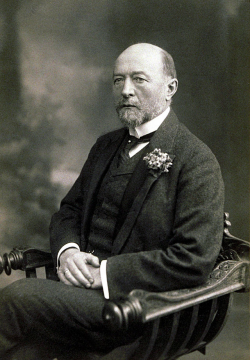Emil von Behring

- Born
- 15 March 1854
- Died
- 31 March 1917 (age 63)
Emil von Behring was widely known as a “saviour of children” for his discovery of a diphtheria antitoxin in 1890, for which he won a Nobel Prize for in 1901.
Although his father had originally sent him to school to prepare for priesthood, a teacher recognised von Behring’s penchant for medicine. And so, in 1874, the teacher arranged for von Behring to attend Berlin’s military medical institute, the Pépinière. Here he received free medical education in exchange for his future military service. In 1878, he was awarded his doctorate at the Humboldt University of Berlin.
His military education meant that he remained associated with the Army as a military physician for some time before joining Robert Koch as his assistant in 1889 and going on the work at the Institute for Infectious Diseases. In 1894, he became professor of hygiene at Halle, and the following year he moved to the corresponding chair at the University of Marburg where he stayed for the remainder of his career.
Throughout his academic career, von Behring’s research focussed on immunology of bacterial diseases. His most famous work was on the bacterium that causes diphtheria. Diphtheria is a throat infection that spreads by direct contact or via the air from a cough or sneeze, and for many years it was widespread and lethal.
In Emil von Behring’s research, he isolated the diphtheria toxin, made it sterile, and injected it into an animal. Emil noticed that this animal started to produce substances in their blood which could neutralise the toxins. He isolated this substance and went on to show that these substances (antitoxins) could also immunise another animal and that it could also cure an animal which showed symptoms of diphtheria.
Later, he found that immunity to diphtheria could be produced by injection of the toxin and antitoxin together, and von Behring went on to produce this mixture, the first diphtheria vaccine, which has helped to largely eradicate the disease from many parts of the world.



